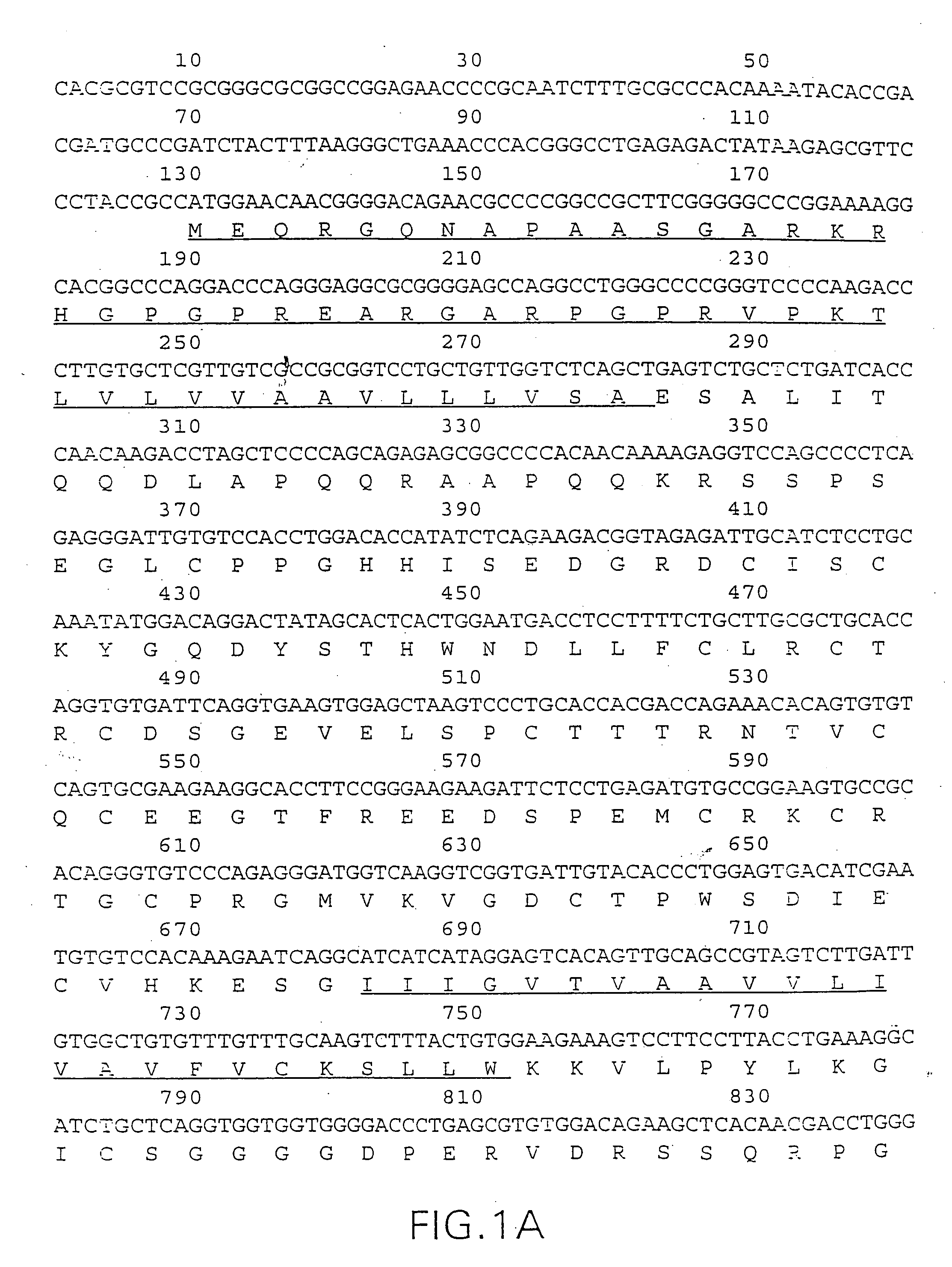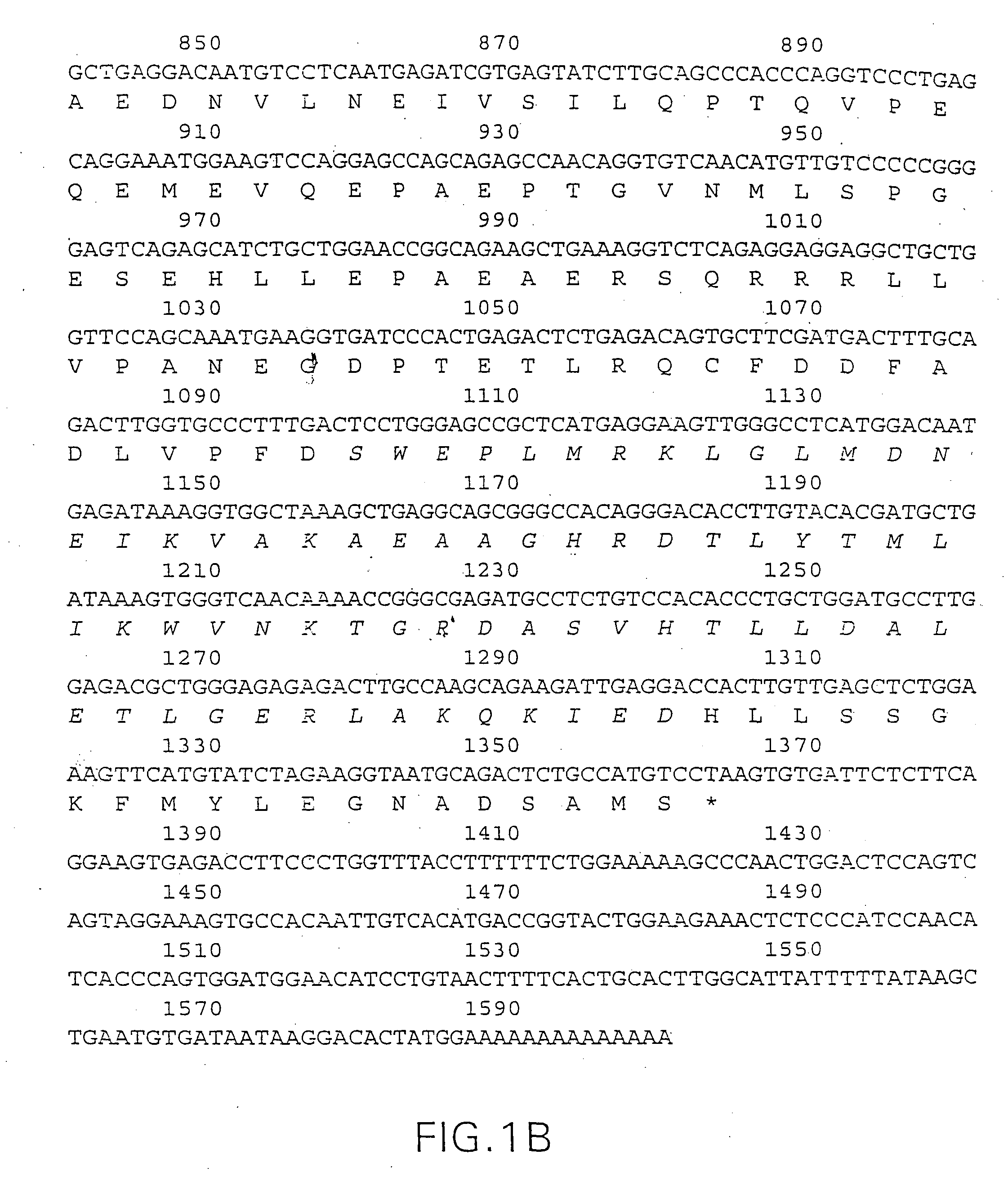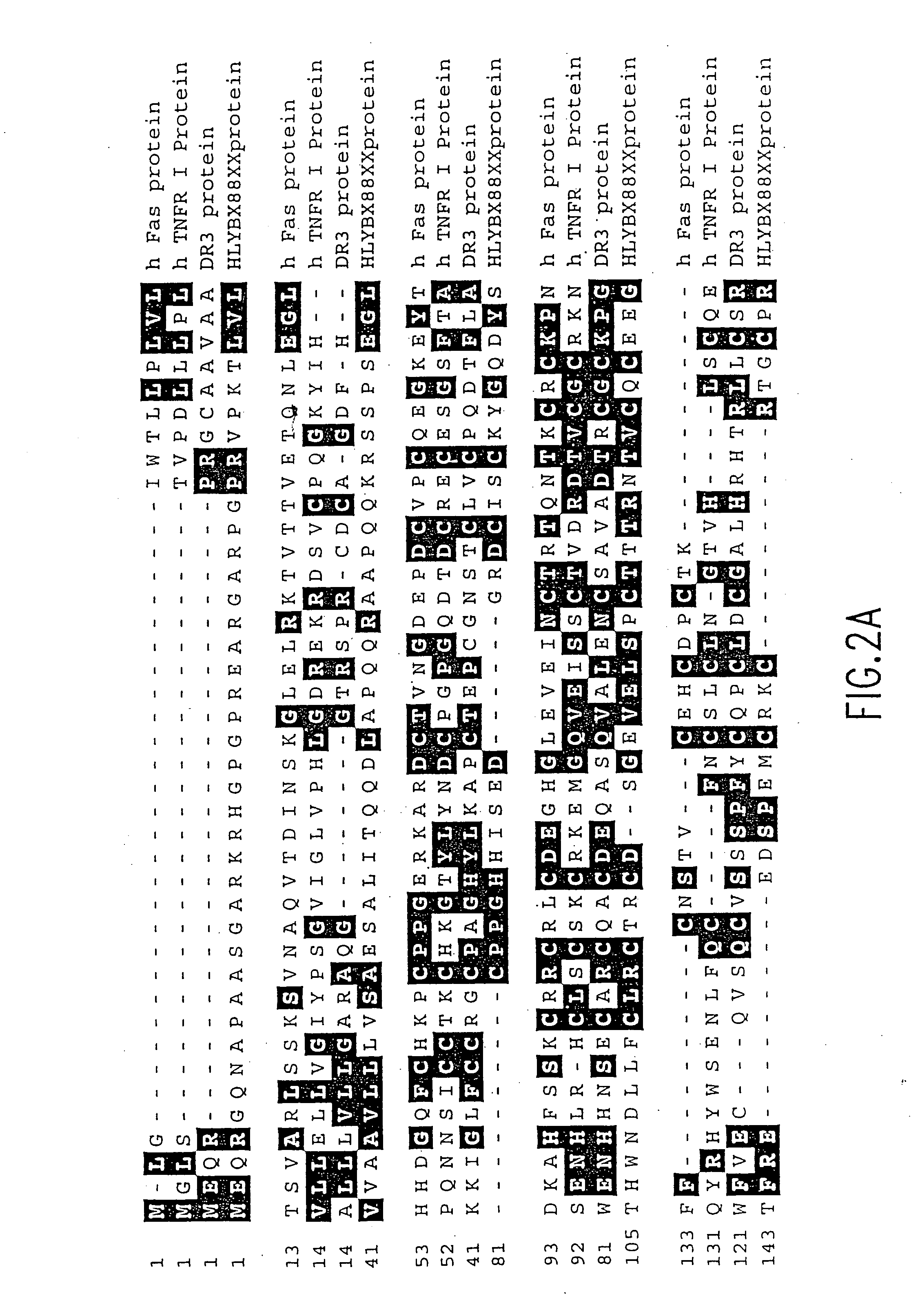Death domain containing receptor 5
a technology of death domain and receptor, which is applied in the direction of antibody medical ingredients, peptides/protein ingredients, peptides, etc., can solve the problems that the method does not always produce the same predicted cleavage point(s) for a given protein, and the nucleotide sequence determined herein may contain errors
- Summary
- Abstract
- Description
- Claims
- Application Information
AI Technical Summary
Problems solved by technology
Method used
Image
Examples
example 1
Expression and Purification in E. coli
[0801] The DNA sequence encoding the mature DR5 protein in the deposited cDNA (ATCC No. 97920) is amplified using PCR oligonucleotide primers specific to the amino terminal sequences of the DR5 protein and to vector sequences 3' to the gene. Additional nucleotides containing restriction sites to facilitate cloning are added to the 5' and 3' sequences respectively.
[0802] The following primers are used for expression of DR5 extracellular domain in E. coli: The 5' primer has the sequence: 5'-CGCCCATGGAGTCTGCTCTGATCAC-3' (SEQ ID NO:8) and contains the underlined NcoI site; and the 3' primer has the sequence: 5'-CGCAAGCTTTTAGCCTGATTCTT-TGTGGAC-3' (SEQ ID NO:9) and contains the underlined HindIII site.
[0803] The restriction sites are convenient to restriction enzyme sites in the bacterial expression vector pQE60, which are used for bacterial expression in this example. (Qiagen, Inc. 9259 Eton Avenue, Chatsworth, Calif., 91311). pQE60 encodes ampicilli...
example 2
Expression in Mammalian Cells
[0809] A typical mammalian expression vector contains the promoter element, which mediates the initiation of transcription of mRNA, the protein coding sequence, and signals required for the termination of transcription and polyadenylation of the transcript. Additional elements include enhancers, Kozak sequences and intervening sequences flanked by donor and acceptor sites for RNA splicing. Highly efficient transcription can be achieved with the early and late promoters from SV40, the long terminal repeats (LTRs) from Retroviruses, e.g. RSV, HTLVI, HIVI and the early promoter of the cytomegalovirus (CMV). However, cellular signals can also be used (e.g. the human actin promoter). Suitable expression vectors for use in practicing the present invention include, for example, vectors such as pSVL and pMSG (Pharmacia, Uppsala, Sweden), pRSVcat (ATCC 37152), pSV2dhfr (ATCC 37146) and pBC12MI (ATCC67109). Mammalian host cells that could be used include, human He...
example 3
Protein Fusions of DR5
[0827] DR5 polypeptides of the invention are optionally fused to other proteins. These fusion proteins can be used for a variety of applications. For example, fusion of DR5 polypeptides to His-tag, HA-tag, protein A, IgG domains, and maltose binding protein facilitates purification. (See EP A 394,827; Traunecker, et al., Nature 331:84-86 (1988).) Similarly, fusion to IgG-1, IgG-3, and albumin increases the half-life time in vivo. Nuclear localization signals fused to DR5 polypeptides can target the protein to a specific subcellular localization, while covalent heterodimer or homodimers can increase or decrease the activity of a fusion protein. Fusion proteins can also create chimeric molecules having more than one function. Finally, fusion proteins can increase solubility and / or stability of the fused protein compared to the non-fused protein. All of the types of fusion proteins described above can be made using techniques known in the art or by using or routin...
PUM
| Property | Measurement | Unit |
|---|---|---|
| time | aaaaa | aaaaa |
| composition | aaaaa | aaaaa |
Abstract
Description
Claims
Application Information
 Login to View More
Login to View More - R&D
- Intellectual Property
- Life Sciences
- Materials
- Tech Scout
- Unparalleled Data Quality
- Higher Quality Content
- 60% Fewer Hallucinations
Browse by: Latest US Patents, China's latest patents, Technical Efficacy Thesaurus, Application Domain, Technology Topic, Popular Technical Reports.
© 2025 PatSnap. All rights reserved.Legal|Privacy policy|Modern Slavery Act Transparency Statement|Sitemap|About US| Contact US: help@patsnap.com



